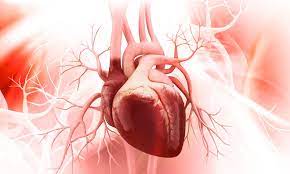The vascular system plays a role in maintaining heart health by making sure blood flows seamlessly throughout the body, and cardiology care is beneficial for supporting both vascular and cardiac well-being. When vascular conditions develop, they can place a significant strain on the heart, affecting its ability to function effectively. Recognizing potential risks and symptoms can empower individuals to take proactive steps toward maintaining vascular and cardiac health.
Identify Vascular Risk Factors
The heart and vascular system operate as a unified network to distribute oxygen-rich blood. When the blood vessels encounter problems, the heart often has to work harder, leading to potential complications. Key vascular issues such as high blood pressure, atherosclerosis, and blood clots can make the heart more vulnerable. Narrowed or blocked arteries can reduce the blood supply, while vein-related conditions can cause irregular circulation, which increases the risk of heart strain. Certain factors, including genetics, lifestyle habits, and chronic medical conditions, can contribute to these vascular issues. Understanding the connection between vascular health and heart performance is beneficial for identifying risks early on and for discussing preventative measures and cardiology care with a healthcare provider.
Monitor Blood Flow Changes
Arteries are the blood vessels responsible for carrying oxygenated blood from the heart to the rest of the body. Problems with arteries, such as reduced elasticity and blockages caused by plaque, can directly affect heart function. Below are key concerns regarding arterial health:
- Atherosclerosis: A condition where fatty deposits build up on arterial walls, narrowing the space for blood flow and putting added pressure on the heart.
- Peripheral Artery Disease (PAD): This occurs when arteries in the limbs become narrowed, which may signal systemic vascular issues that affect the heart.
- High Blood Pressure (Hypertension): Over time, elevated pressure can cause arteries to stiffen or weaken, putting the heart at risk for damage or disease.
Maintaining healthy arteries is beneficial for making sure the heart doesn’t bear an unnecessary workload.
Recognize Warning Symptoms Early
Certain symptoms may indicate underlying vascular problems that could also impact the heart. Detecting these signs early may help prevent further complications. Watch for the following indicators:
- Persistent leg pain or cramping during activity may signal PAD.
- Swelling in the extremities (e.g., feet or ankles) can result from poor vein function or circulatory inefficiencies.
- Discoloration or sores on the legs or feet that are slow to heal, possibly pointing to compromised blood flow.
Although these signs alone are not conclusive of a heart problem, they warrant medical attention and further investigation into vascular health.
Understand the Link Between Veins and Heart
Veins play a role in returning deoxygenated blood to the heart, helping to maintain proper circulation. When problems occur in the veins, they can cause additional strain on the heart, as circulation becomes less efficient. Conditions such as deep vein thrombosis (DVT) lead to blood clots in the deep veins, while chronic venous insufficiency (CVI) results from the failure of vein valves to function correctly.
These vein-related issues often cause symptoms such as swelling, pooling of blood, or even blockages that can complicate overall cardiovascular health. Although often cosmetic, untreated varicose veins can also contribute to ongoing problems with blood flow. By addressing these vein conditions promptly, it is possible to support healthy circulation and minimize unnecessary stress on the heart.
Talk to Your Cardiologist About Cardiology Care
Vascular conditions that affect heart health require attention, but they don’t need to feel overwhelming. Consult with a cardiologist or vascular specialist to assess your specific risks and develop personalized strategies to protect your health. Early intervention, a balanced lifestyle, and a proactive approach go a long way in supporting both vascular and cardiac well-being.
- How a Gastroenterologist Can Help with Chronic Digestive Disorders
- How to Prepare for Cataract Surgery
- How To Create a Personalized Weight Loss Plan
- The Importance of Foot Care for Diabetes: Prevention Tips You Need
- Cutting vs. Polishing Tools in Dentistry: Key Differences Every Dental Professional Should Know


Leave a Reply